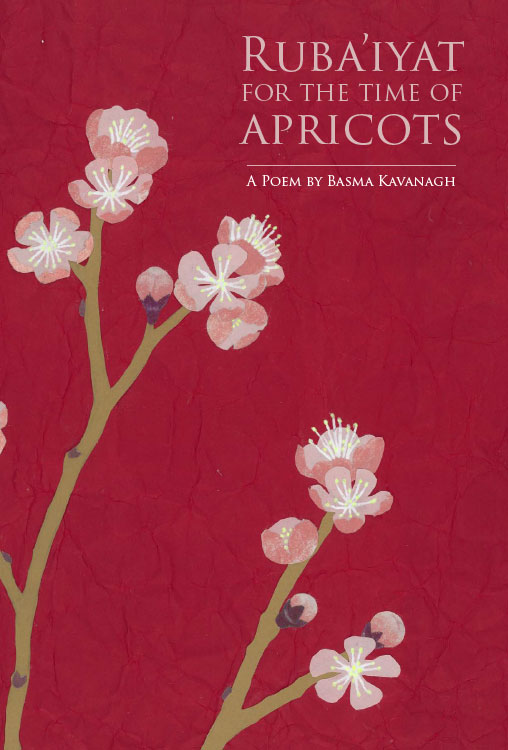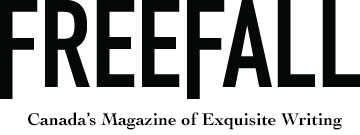 by Megan Nega
by Megan Nega
Ruba’iyat for the Time of Apricots
Basma Kavanagh
Frontenac House Poetry (2018)
ISBN: 978-1-927823-81-1
Basma Kavanagh’s Ruba’iyat for the Time of Apricots is a long-form poem written in earthy quatrains that are woven together with delicate alliterative sound and entrancing imagery. Like streams driven by gravity towards a great body of water, Kavanagh’s narrative quatrains flow together under the weighty contemplation of one ultimate topic—heritage.
Kavanagh’s work nimbly braids three narrative threads—Ahli, Astura, and Ana—through the stanzas. Ahli explores Kavanagh’s Lebanese heritage and family history, Astura binds the oppression of women with environmental crisis, and the third thread, Ana, explores the relationship between poetry, language, and life. The overlaying of story allows Kavanagh to uncover the many histories of her identity.
Ruba’iyat for the Time of Apricots is a poem enchanted by the science and mystery of creation. Notice how effortlessly Kavanagh blurs the line between the creation of human life and the crafting of a poem:
An embryo grows cell by cell, a poem word by word –
kalima bi kalima. From a kernel, each invents,
then discovers, its limbs, lungs, heart. Its pulse. A recipe
for breath, for blood. Both nurture unborn language in the dark. (49)
Creation need not be comfortable; Kavanagh’s poem explores how raw the process can be:
It is painful to gestate a poem, body given
wholly to its growth. Bones robbed, their mineral arsenal
slowly emptied. This insatiable poem scavenges
the carcass of memory, pulling until its skin snaps. (13)
There is a rhythm, a pulse, to Kavanagh’s work achieved through her precise use of meter, internal rhyme, and alliterative sound. The lilt of her words pulled me through the fourteen syllable lines—stressed and unstressed, up and down. The motion evoked is well-suited to the poem’s content which shifts easily from microscopic to macroscopic. Organic yet transcendent, Kavanagh’s detail is focused as equally on dirt as the cosmos.
Her poetry digs, unearthing images of women buried overnight in caves ritualistically by men. Wholly immersed, I imagined myself buried alongside the women, surrounded by mole-rats and taproots, wondering, “Is this a dream? Will [we] wake at home to sounds of river?” (31). In one breathtaking line, Kavanagh shifts the focus from underground to outer-space and ascribes a cosmic flair to human creation, writing: “women sew sun, moon, and stars inside their robes” (22).
Kavanagh’s poetry yearns to understand motherhood, and to the reader she poses a beautiful question, to which she offers answer:
Who are we, who are not mothers? I am Im la ’ahad,
mother of no one. Im shi’er, mother of poetry. (39)
Arabic words dot her poetry like fractured memories—her own as well as ancestral ones inherited through generations. The relationship between lineage and language is seamless, and the overlapping of body and poem extends back through time and Kavanagh’s matrilineal line:
Seventy years ago, I was an infant egg among
a million, my sister and brother, and unknown sibling,
in the womb of our mother, in the womb of her mother. (10)
The undercurrent of the poem is laced with critical commentary about masculinity. Kavanagh associates the masculine with violence and often alludes to historical and generational traumas. In a powerful quatrain, she appeals directly to men:
Men, if you saw our hidden blood, would it sate you? We fill
a lake each day, a sea each year – why seek more? Lift the veil,
re-feel your brutal origin – and ours. Birth, primal gift
and trauma. Come, return to the root of the root of your self. (26)
Thankfully, Kavanagh doesn’t let her reader linger in despair about violence and injustice for long; instead, she offers solution, asking men to “unlace the rigid armour [they’ve] come to know as skin” (40). To women, she offers advice of liberation:
Violence to self is violence. Sisters, forget pen,
forget paper, permission. Just string your words together,
fill strand after stand, bind them. Slide them under your pillow.
Wear them, cherish their whispered jingle at ankle and wrist. (33)
Environment is invoked in every quatrain of Kavanagh’s poem. In one of my favourite lines, she reveals how elemental a body can be: “I am writing from within / the nucleus of an atom, eye of my own small storm” (8). In this moment of stillness amidst chaos, self is understood through external environment—internal pause powerful as any storm. Kavanagh’s poem searches for the words to express her heritage and identity, but in a breathtaking line the urgency to transcribe her life falls away to reveal her profound and heartfelt recognition that like “a mysterious script of worms, bees, / seed-leaves, eggs, roots and snails—I too am untranslatable” (42).
At its core, poetry asks us to pause and listen, to notice. Kavanagh’s poem is pure artistry, the product of a poet who pays attention. Equal parts earth and empyrean, her words contain in the balance revelations, and in the breadth of one poem whole worlds are birthed and unearthed.
Megan Nega is a poet from Calgary, Alberta. She recently graduated from Mount Royal University with a degree in English (Honours) and minors in Creative Writing and Ancient & Medieval Studies. Her work has appeared in Freefall Literary Magazine and New Forum Literary Magazine. When not writing poetry she enjoys writing about all things writing-related on her blog, Writer’s Hearth, at www.writershearth.com

